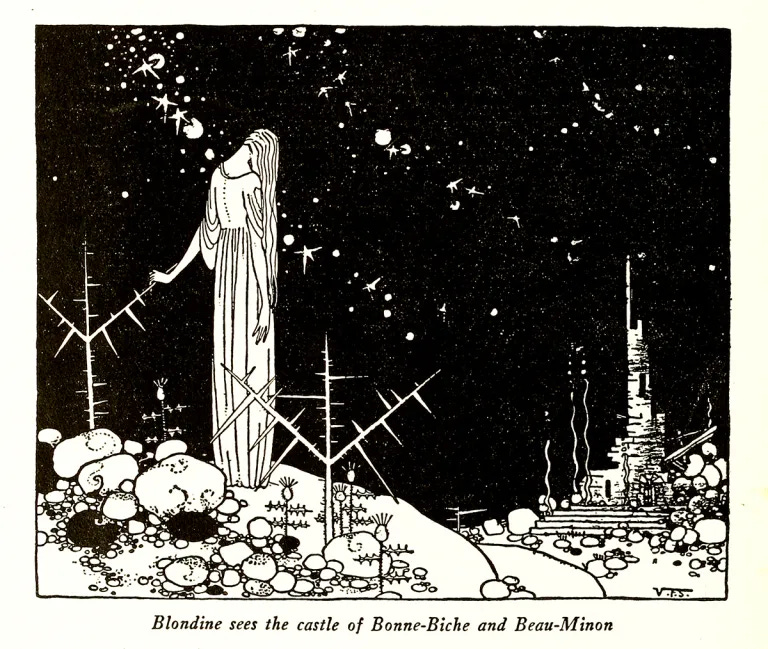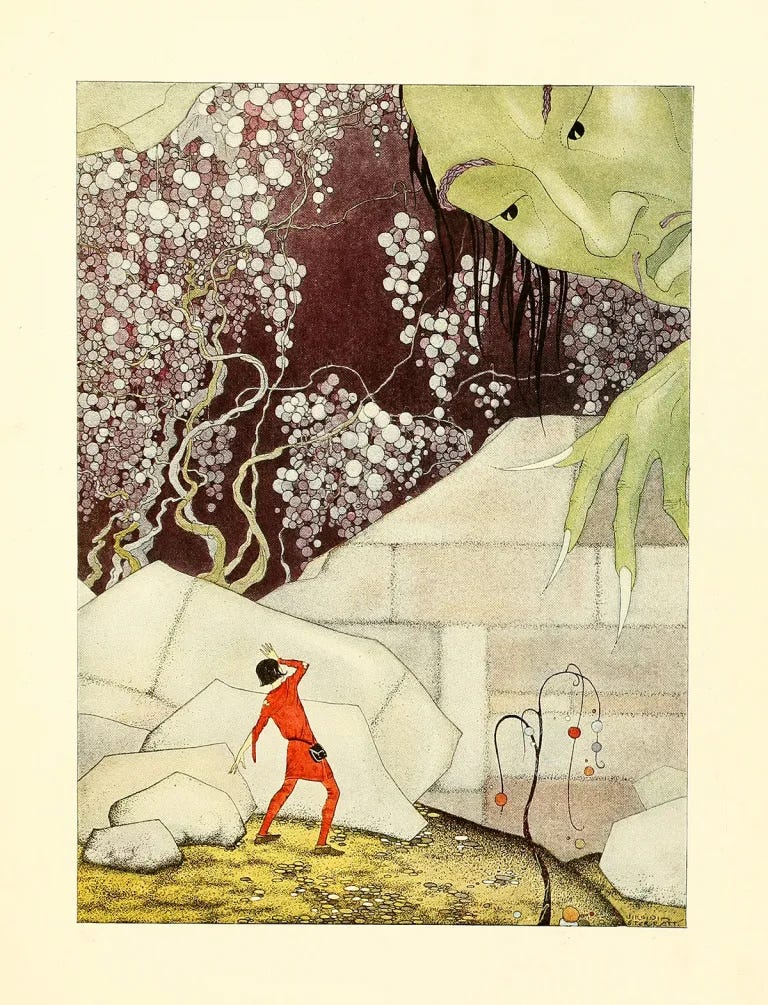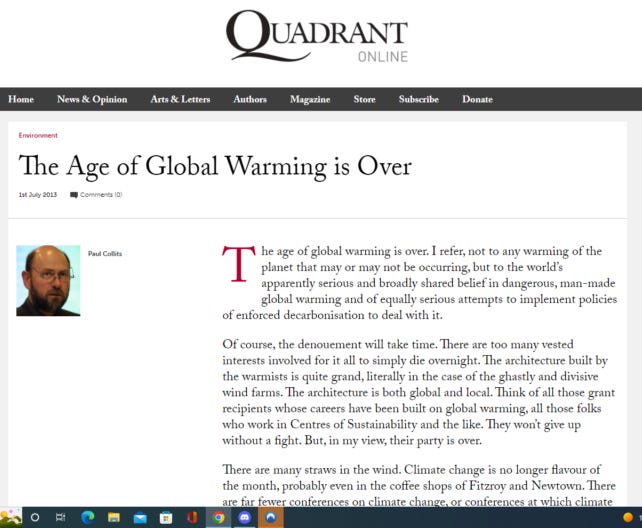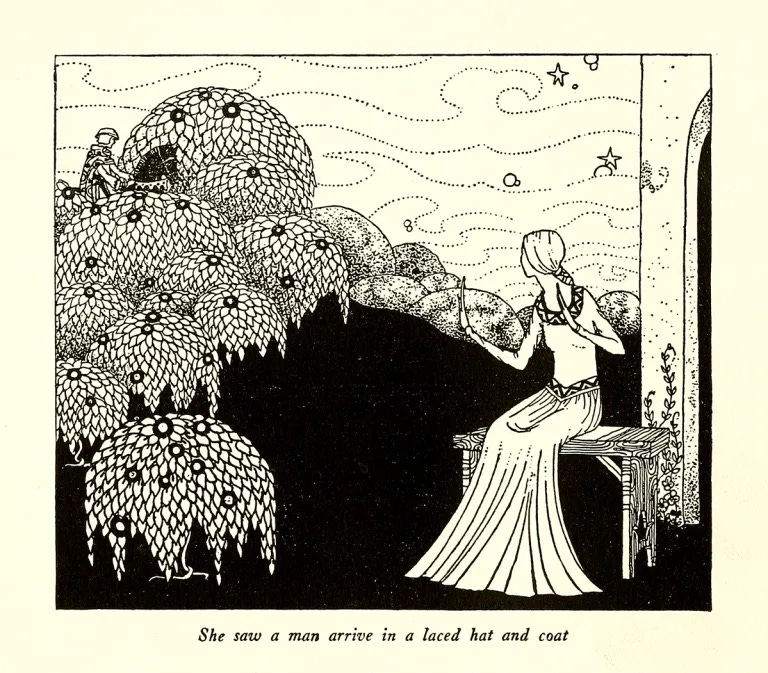Life as Marketing
By Paul Collits. Illustrations by Virginia Frances Sterrett
The irrepressible anti-lockdown architect turned filmmaker Robin Monotti, a close friend of musician Eric Clapton, recently stated that, in the age of “fact checkers”, “science had been reduced to marketing”.
Well, isn’t it the case that just about everything has been reduced to marketing and public relations? Optics rule.
With insincere apologies to our departed Aussie Prime Minister, we are all "Scotties from Marketing" now. Politics. The academy, and not just science. Climate botherers. International and domestic sport. The legacy media. Woke corporates especially.
Life is now ruled by winning (both as adjective and verb) “narratives”. And the tools of the trade are persuasion by whatever it takes, including propaganda, lies, hypnotism, the creation of fear, all appeals to the human psyche.
If truth is the first casualty of post-modernism (as well as of war), and all relations are reduced to power relations, as they assuredly must be when there is no objective truth, no objective right and wrong, then it follows that all becomes “narrative”. Life becomes the battle of narratives, in which all weapons are deployed in order that one’s narrative prevails.
The deployment of weapons is largely an exercise in marketing, when coercion won’t work. Nudging is marketing. Advertising is not quite marketing, but it is a critical part of it. A pejorative term for marketing is propaganda. It isn’t exactly a coincidence that the widely acclaimed guru, the father of marketing, one Edward Bernays, called his magnum opus (1924) Propaganda.
If Bernays wrote the book, Josef Goebbels achieved almost instant implementation in Nazi Germany, where Hitler’s numbers at the height of his popularity (approaching 90 per cent) were simply outstanding. Even dictators need to be popular. Goebbels headed the unself-consciously named Reich Ministry of Public Enlightenment and Propaganda. Goebbels’ quotable quotes on propaganda are many, famous and incisive.
The American scholar and social scientist Robert Cialdini is regarded by many as the most perceptive writer on persuasion. His 1984 classic bestseller was called Influence: The Psychology of Persuasion. He recognised persuasion to be a science and an art. He is mostly read by marketers who practise these dark arts. The Harvard Business Review has noted:
"Robert Cialdini, considered the leading social scientist in the field of influence, was initially drawn to the topic because he saw how easily people could step over an ethical line into manipulation or even abuse. His … book Influence, which laid out six principles of persuasion [since updated to seven], was eloquent about the dangers of persuasive techniques in the wrong hands."
THE USES AND ABUSES OF INFLUENCE
The wrong hands. Indeed. Ideologues everywhere today are masters in the art of persuasion. We are now living a global, dystopian version of the infamous Milgram experiment, which showed how much human beings will do evil things when prompted by devious authority figures.
The fictional masterpiece of modern democratic politics as marketing is probably the 1998 film Wag the Dog. It is the story of an American president with an election to win and a sexual scandal on his doorstep. He hires a Hollywood producer to create and film a war that did not actually exist. The credulous behaviour of people in the face of this literally incredible fiction is the core fun of the film. The fictional Sir Humphrey Appleby of Yes Minister fame once opined that small wars could be used to distract voters from domestic policy failures or scandals.
The Covid non-pandemic has been the real-life masterpiece of politics as marketing. An idea was created, and people will argue over the purposes of this creation, in order to achieve certain political purposes.
Hence the narratives that followed – flatten the curve, stay Covid safe, the vaccines will give us back our freedom, and the rest of the lies and propaganda. The evil marketing of fear is, indeed, marketing. It was deemed necessary, by the Nudge Unit in Downing Street and similar operatives across the Western world, in order to achieve compliance with ridiculous rules and mandates that have been shown (by real science, not by fact checkers) to have been unnecessary, dangerous and costly.
The vaccine advertisements continue unabated. As the renegade Aussie MP Craig Kelly has pointed out:
I was shocked to see an ad on Australian TV tonight promoting the ‘’booster‘’ injections for all.
This is despite recent, arresting hospitalisation data for New South Wales as follows:
50 people – 4 or more jabs;
184 people – 3 jabs;
93 people – 2 jabs
0 people – 0 jabs.
That is right. No one unvaccinated was in hospital with Covid.
The international narratives parroted by governments everywhere has been that Covid is a “pandemic of the unvaccinated”. This is now farcically inaccurate. But since governance is now the marketing of narratives, facts that do not fit the narrative are either hidden, ignored, ridiculed or denied. Often, they are, wickedly, labelled “misinformation”. Or all of these. Misinformation is the new currency in narrative-driven politics.
What of climate “science”, the daddy of all marketing campaigns? Recently we had the case of Professor Peter Ridd, whose efforts to keep his job in the face of his criticisms of academic colleagues over Barrier Reef degradation were ultimately defeated in the High Court of Australia. James Cook University revealed itself as placing a higher priority on getting grant funding than on robust academic debate. It saw Peter Ridd as reputational damage. All its marketing efforts as a “world class” centre of excellence in marine biology might come to zero if this recalcitrant won. Research grants might be at risk. Funding could dry up. The whole university funding model is now built on public relations.
Climate change, of course, has to be, outside Covid, the most successful creation and maintenance of a narrative in history. All the marketing tools have been in play. The education system, embedding climate alarmists in strategic positions, the HR revolution in corporates, the corruption of research funding-obsessed vice chancellors and other senior university “executives”, advertising in support of “sustainability”, supra-national institutions, now even private equity companies, who know exactly where the bread is buttered.
The climate narrative, without evidence, without proper science and without coordinated, effective pushback, has “forced the card on us”, as the fictional Bernard Woolley would have said. It has been a truly masterful play, a march through the institutions par excellence.
Rupert Darwall’s painstaking and compelling history of the climate cult (The Age of Global Warming: A History, 2013) ably demonstrated the development of a coherent narrative over time, a narrative that has taken all before it.
I made the huge mistake, in 2013, of assuming that everyone would wake up to what I regarded as a scam, and, using evidence based scientific analysis, would see through the assertions and wafer-thin arguments advanced by adherents to the narrative.
I was wrong because I underestimated the sophistication of the tricks used by the climate cultists and overestimated the rationality of the masses. That according to a number of polls as many as half the population don't believe in climate change as presented by our legions of government funded academics and well meaning activists hasn’t stopped many of these same people from voting consistently for the political parties pushing net zero.
Science, as a result, has ceased to be a battle of competing, falsifiable hypotheses decided by replicable empirical evidence, but has succumbed to the pressures of the age. Scientists have been replaced by modellers (like Neil Ferguson) who compete for fame and influence by creating media hits.
Academic excellence is now measured by “media mentions”. In a powerful recent interview on Unherd, Bret Weinstein made the case that the whole of the scientific system had been captured by bad actors, and was, as a result, no longer to be trusted. As Weinstein pointed out to a slightly naïve Freddie Sayers, Covid has laid bare the whole rotten system.
So much for science and the academy. What about corporates?
A lot changed when companies began to see their lives as being about more than just making money. Serving the customer gave way to the god of “shareholder value” which now has given over to “stakeholder capitalism” as the chief driver animating their behaviour. Stakeholder capitalism became woke and green and rainbow when people, especially millennials, went woke and green and rainbow. Companies now, ironically, still seek to please their customers, but do so now by demonstrating their morality – morality defined through a post-modern lens – rather than through excellent products and services.
While this says much (none of it flattering) about the current generation of consumers, it also explains why companies invest so much energy in public relations. Social media have weaponised the current generation of moralistic customers, of course. Now you can destroy a reputation, be it of an individual or a company, at the speed of an influencer’s tweet. This makes CEOs very nervous about “image”.
Once upon a time, who cared what companies corporately thought about whales or indigenous peoples or homosexuals or trees? Who even knew what they corporately thought? Now, with everyone a stakeholder and, so, a potentially cranky “influencer”, companies behave in craven ways. Once you cede this power to consumers, you then need the very best PR machine you can get. It becomes all about the narrative. Creating it, shaping it, safeguarding it. Life is marketing now in the world of capitalism.
The Financial Times had the following headline in January this year: BlackRock’s Fink rejects accusations of being ‘woke’.
Fink hasn’t been the only one, of course.
He might well be telling the truth. Who knows what he himself thinks about renewables? He might well see them as the greatest con in world history. But will he have BlackRock investing in them? Too right he will. The same Financial Times story had him “defending stakeholder capitalism”. Companies have become today’s churches, enforcing moral standards and the “correct” views. Not because they necessarily believe any of the woke twaddle. They just have to guard their “reputations” in the eyes of woke customers who are not even their own personal customers.
Reputational damage and its avoidance drives all. Damage control provides a hell of a lot of work these days for marketing types. Some call all this “virtue signalling”.
Marketing was once, in simpler times, defined as follows:
… the action or business of promoting and selling products or services, including market research and advertising.
How very outdated. Who can argue that capitalism hasn’t changed fundamentally?
Here is a more accurate, up-to-date definition of marketing:
Marketing is the activity, set of institutions, and processes for creating, communicating, delivering, and exchanging offerings that have value for customers, clients, partners, and society at large.
Now we are getting warm.
Image. Optics. Narrative. Reputational damage. Life, indeed, is marketing, whether you are talking about political parties, universities, academics, churches, corporates. Under this regime, the PR gurus will never go short of a dollar. Such a regime, alas, opens the door to propaganda, manipulation, lies, coverups and hysteria. Just look around at Covid World. Or Ukraine, a classic Wag the Dog if ever there was one.
The war has been a textbook case of pivoting the narrative to take the heat off politicians and other bad actors who might, in a just and rational world, be subject to traditional scrutiny of their games.
The bottom line is, where there is no truth, the world morphs into a set of competing post-modernist narratives, all bidding for attention, resources, commitment and, ultimately, hegemony. Opinion designed to influence the many can be passed off as fact. Not a pretty sight. It is a Hobbesian world, but reduced to hype and farce as well as brute force and power, and Orwellian in its methods. A world of cognitive dissonance, of newspeak and doublethink.
Using methods that defy our supposed rationalism, the ultimate fruit of the intellectual movement we still fondly think of as “The Enlightenment”. We simply drink the Kool-Aid of whatever is the latest thing we are urged to believe in. And we think of this as “progress”. We think we do not live in a totalitarian world, and castigate those who insist we are.
Mattias Desmet, now rightly very well known for his work on “mass formation”, has analysed how institutions, whole classes, generations and whole populations can be duped into believing rubbish, and how politicians, for example, can be persuaded to take actions in pursuit of the chimera, net zero, that will destroy entire economies that were built on the coal that fired the industrial revolution and modern prosperity.
One of Desmet’s arguments is that those who succumb to mass hypnosis and cults have something missing in their lives, and are drawn to any club that will have them, and give their existence meaning. Christian apologists (like GK Chesterton) would say, correctly, that this is the result of the Nietzschean action of killing off God.
Others might see this very modern disease as the result of having communism (as a global threat) removed in the 1990s, and people needing to believe in something else (environmentalism, socialism 2.0, or whatever).
Mass formation and the skillset of marketers are closely aligned, to be sure. The best marketing has much in common with totalitarian techniques of fear, gaslighting and hypnosis. Understanding both mass formation and marketing is critical to our efforts to understand the world of today, and how to push back. There are no easy ways to challenge apparently compelling, if clueless, beliefs.
The duped, low information generation now in charge of the shop has within its grasp, now and ironically, the ultimate weapons of the market.
Clearly, one of the most dangerous developments of modern times, perhaps the most dangerous, has been the transformation of the arena of marketing from an activity undertaken by individual companies to sell products and services or politicians selling their parties’ wares to an all-encompassing, collectivist activity of ostensibly benign national and global institutions, with malfeasance, manipulation and, ultimately, control, in mind.
Totalitarianism isn’t new, of course. But its latest iteration, technocracy, has found itself able to use both traditional and newly developed, sophisticated techniques of persuasion and intimidation previously unavailable. And it has worked.
A world of supposedly intelligent minds has succumbed to mass manipulation and lemming-like behaviour on so many fronts. Idiocracy, as Igor Chudov calls it? Or merely the innocent victims of evil and very clever perpetrators operating at so many levels?
All of life now, as described in CJ Hopkins’ New Normal Reich, is marketing, in its most pervasive and sinister forms.
Virginia Frances Sterrett (1900–1931) had barely learned to walk when she began drawing. She never stopped, and her talent never ceased winning over legions of fans.
She dropped out of the Art Institute of Chicago after her mother fell ill and was forced to support her family through art. She took a series of jobs at various Chicago advertising agencies, earning $10 a week and grateful to earn it, but finding the work — endless drawings of pots, pans, beds, and travel bags — soul-syphoning.
At nineteen, Virginia was diagnosed with tuberculosis.
To find out more about this truly fascinating artist go here:
https://www.themarginalian.org/2022/01/27/virginia-frances-sterrett-old-french-fairy-tales/
Paul Collits is an Australian freelance writer and independent researcher. He publishes widely across a number of Australia’s leading publications and has been one of the country’s single most powerful and cogent commentators throughout the Covid era. He has worked in government, industry and the university sector, and has taught at tertiary level in three different disciplines – politics, geography and planning and business studies. A collection of his writing published in A Sense of Place Magazine can be found here. You can follow his most recent work here.

















